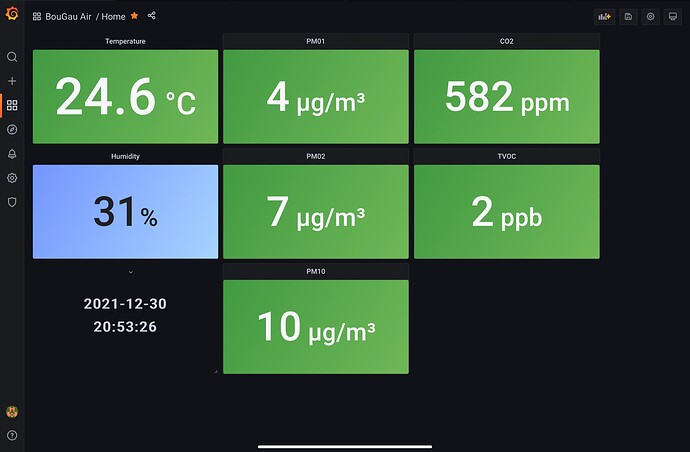Anyone add an SGP30 sensor to their board for monitoring TVOC? I ordered 2 of the linked modules from the article:
GY SGP30 Air Quality Gas Sensor Measurement Gas Sensor TVOC/eCO2 Air Quality Formaldehyde Carbon Dioxide Detector Tester|Sensors| - AliExpress
I hadn’t installed my temp/humidity sensor yet, so I soldered a 4 pin socket to the board, and 4 pin headers to the SGP30 and plugged it in but always got 0 TVOC from the AirGradient code and when trying to use ESPHome, I was getting nothing but errors.
I tried my second module in case I had a bad one and still had errors. I started trying out different libraries in Arduino IDE and they were all erroring out as well. Finally I found one reference for a different sensor (BMP180) that said to connect it to 3.3 v instead of 5v, so I decided to connect the SGP30 to 3.3v instead of 5v on my breadboard and it started working!
So while it may be pin layout compatible, it does not appear to be compatible with just putting it on the same location on the AirGradient board. I added my temp sensor to extra holes for i2c and power/ground so I’ll probably move the SGP30 to these wires and change it to 3.3 v and then move the temp sensor wires to the regular location for the extension to the new 3D printed case.
Suggestion for future board revisions, add extra standard header compatible hole locations so other sensors like this can be added directly to the board. The I2C OLED header area has enough space, but not the correct order to work with the SGP30, and especially not now that it looks like it wants 3.3 v. The Temp sensor location should maybe specify it is 5v instead of just VIN


